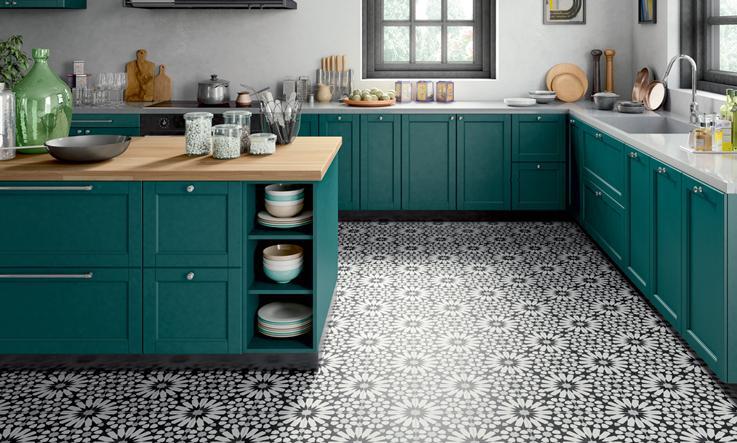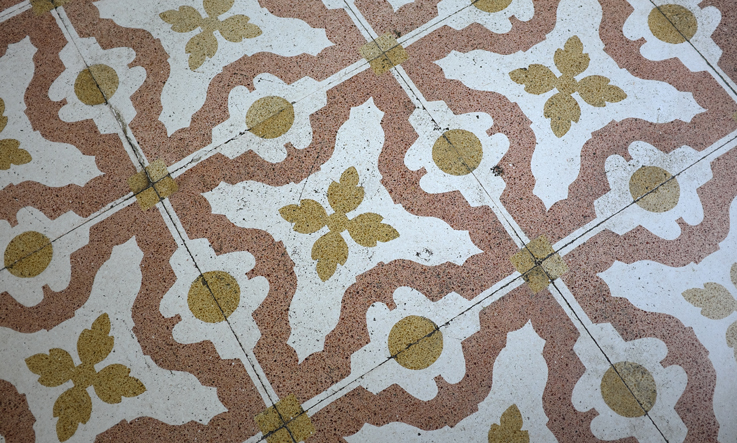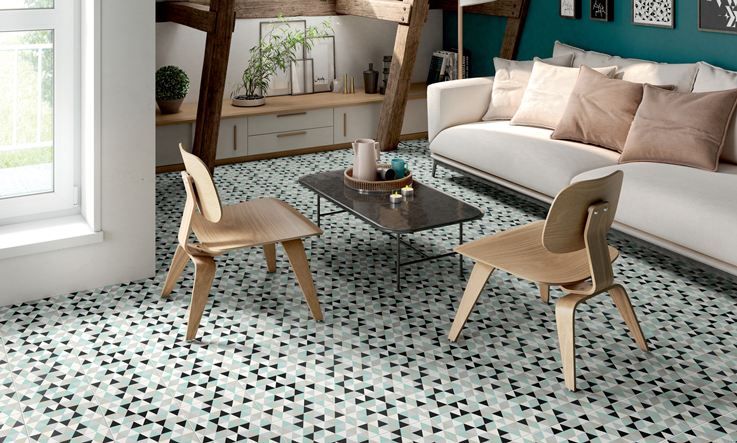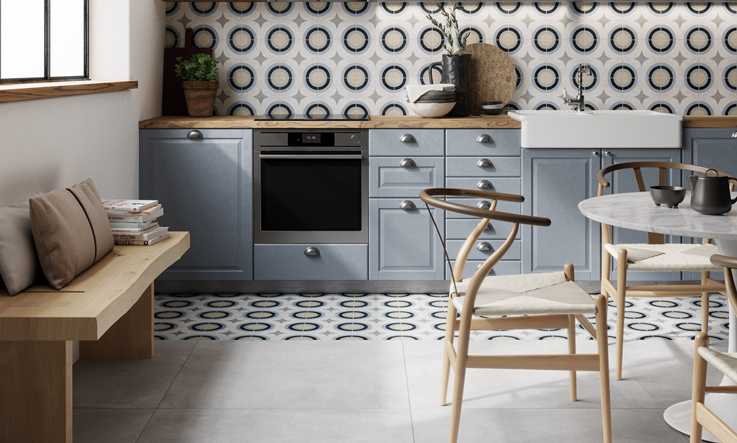
Cement tiles: an ancient taste for modern solutions
When ceramic companies rediscovered the ancient style of cement tiles about two years ago, only few immediately recognized the graphics of floors and coverings that were so common in homes and offices of the early 1900s. The cyclical nature of fashion, however, does not even spare the porcelain stoneware industry that, after the success of wood effect tiles, starts to recover floorings of the past and is inspired by these handmade artistic tiles, which were born at the end of the 19th century in Italy and then spread throughout Europe, Latin America and the United States.
The origins

Very popular until the 1930s, cementine tiles took inspiration from the traditional grit, with which they share the same constituent elements: cement (in particular Portland cement), sand, marble and iron oxides. They differ only in the fineness of marble dust, which is present in the thin surface layer that covers them. The reason for their diffusion obviously lies in the ease manufacturing and installation and because of the easily findable materials. These are the factors that allowed them to become a practical furnishing solution for average domestic environments, gracing them with a striking decorative proposal. As they are artisan products, the decoration was always done by hand with motifs that recall the trendiest styles of that time like liberty and deco, which often had ornaments such as meanders, friezes and flowers, and that were declined in the standard sizes of that time, 20x20 or 25x25 cm.
A modern reinterpretation

Contemporary stoneware tiles have lost much of their original craftsmanship character, but have acquired durability, practicality and reduced weight and volume. If a cement tile of the time was 2 cm thick and had to be subjected to a linseed oil treatment to make it become waterproof, now there are tiles that do not reach one centimeter in thickness, are totally waterproof and easy to clean. As far as graphics and patterns are concerned, the reference to classic elements is always very strong, even if modern ceramic coverings often cross over into subsequent styles such as the opt-art style from the 60s, in order to create modular figures with an hypnotic charm. As time goes by, the range of porcelain tiles has gradually expanded, gaining a modern touch, thanks to creative uses of light and dark, the use of modern pastel shades and references to classic materials of the past, such as terra cotta and clay. The use of these tiles, which have also recovered the hexagonal shape, for an even more retro taste, provides the home or commercial environment with vintage elements that blend well even with contemporary furnishings.
Some tips for use

The combination with concrete effect stoneware floors allows you to establish an extremely balanced mixture between modern and ancient styles which, if combined with contemporary or industrial furnishings, emphasizes the vintage look, while maintaining a modern character. Bathrooms and kitchens are obviously the most suitable environments that allow you to be creative and to think outside the box with this type of products, in order to obtain a new aesthetic balance. If we think about the kitchen, the first area that comes to mind is the backsplash, which is normally not a wide area, therefore the inclusion of colored elements and optical graphics are charmful without becoming excessive. If you are more daring, the same motif can also be used on the floor. In fact, you can create a sort of carpet near the kitchen cabinet, which can be matched with a wood-effect stoneware that gives warmth and emphasizes the vintage character of the room. In the bathroom, on the other hand, you can be creative both on the floor and on the wall, highlighting entire walls or the interior area of the shower with decorated cement tiles, while covering the rest of the room with concrete effect tiles with matching tones. Finally, in classic contexts, you can also enrich the floor of the living area with cementine tiles, in order to create decorated rugs that are surrounded by large format slabs, for interesting contrasts of shapes and colors.